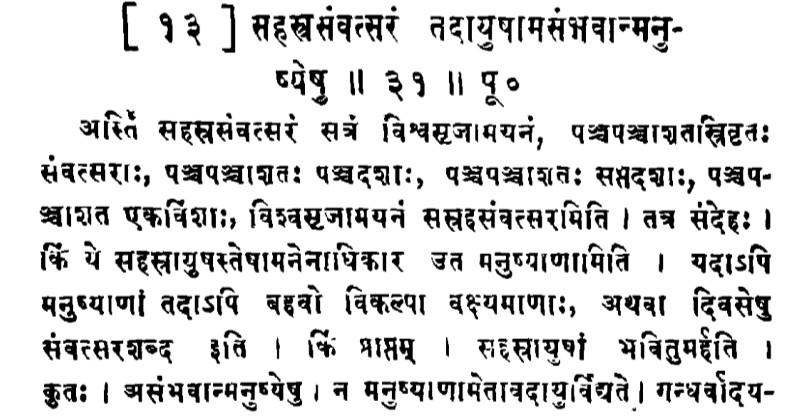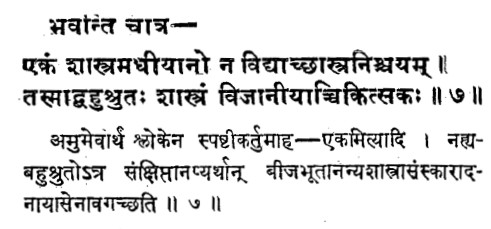What does long periods such as 1000 years in the Puranas mean?
In the Puranas, we find instances of Ravana and many others performing tapasya for thousands of years, or conducting yajnas for longer periods. We will see how these passages were interpreted in our tradition.
In the Puranas, we find instances of Ravana and many others performing tapasya for thousands of years, or conducting yajnas for longer periods. We will see how these passages were interpreted in our tradition.
Katyayana Srauta Sutra 1.6.17-27 says sahasra samvatsara (1000 years) is to be interpreted as 1000 days. Sutra 1.6.26 says & #39;the Vedas themselves have said that samvatsara is divasa& #39;. & #39;अहर्वै संवत्सरः& #39;
Sabaraswami, commenting on Jaimini& #39;s Mimamsa Sutra 6.7.13.31 to 40, says that sahasra samvatsara (thousand years) found in the scriptures is to be interpreted as thousand days.
Swami Vivekananda too held the same view as his predecessors. "However, about the Puranas, I have told you that they are authoritative only in so far as they agree with the Vedas, otherwise not. In the Puranas we find many things which do not agree with the Vedas.....
... As for instance, it is written in the Puranas that some one lived ten thousand years, another twenty thousand years, but in the Vedas we find: शतायुर्वै पुरुषः "Man lives indeed a hundred years." Which are we to accept in this case? Certainly the Vedas."
Conclusion:
Only a person who has studied all related sastras, can truly understand the scriptures. On the contrary, one who has studied only one sastra, cannot fully understand the scriptures. We find this idea emphasised in Susruta Samhita 1.4.7, Sukra Niti 3.133 & 4.33.
Only a person who has studied all related sastras, can truly understand the scriptures. On the contrary, one who has studied only one sastra, cannot fully understand the scriptures. We find this idea emphasised in Susruta Samhita 1.4.7, Sukra Niti 3.133 & 4.33.

 Read on Twitter
Read on Twitter







